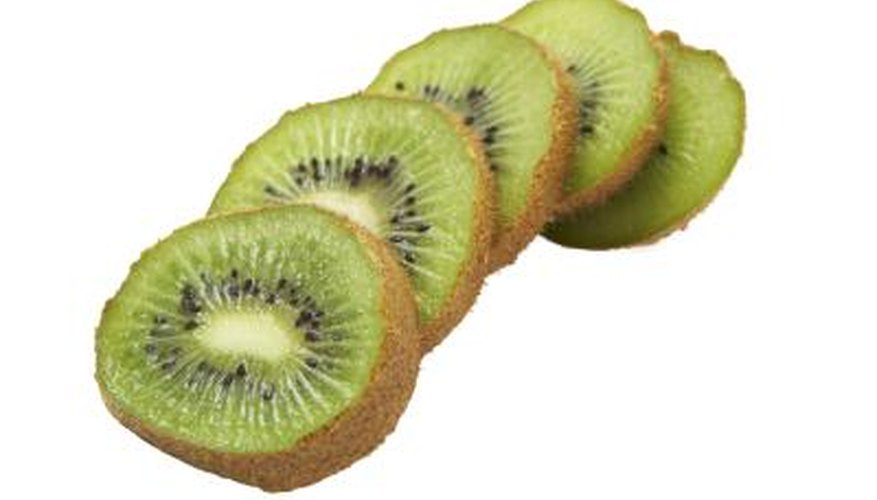Kiwi fruits have an unusual appearance -- brown and fuzzy on the outside with bright green flesh on the inside. Despite their somewhat odd characteristics, kiwis pack a powerful punch with high levels of vitamin C, fibre and potassium. When shopping for kiwi, assess them carefully to ensure that you choose ripe and flavourful fruit. With careful examination, you can tell if a kiwi has gone bad, selecting only the fruits that will deliver a sweet taste.
Pick up a kiwi in your hand and press gently on the fruit with your fingers.
Assess the softness of the kiwi as you press it. If the kiwi feels slightly soft as you press it, it is suitably ripe. If the kiwi feels extremely soft, it is overripe.
- Kiwi fruits have an unusual appearance -- brown and fuzzy on the outside with bright green flesh on the inside.
- If the kiwi feels slightly soft as you press it, it is suitably ripe.
Look for bruising on the outer flesh of the kiwi. A suitably ripe kiwi should not have bruising, but an overripe kiwi may have noticeable bruises.
Examine the kiwi for moist areas. If you see places on the kiwi skin that appear moist or wet, these may be bruises with advanced decay. This indicates a spoiled or overripe kiwi.
- Look for bruising on the outer flesh of the kiwi.
- Examine the kiwi for moist areas.
Assess the fuzzy skin of the kiwi. It should not exhibit any wrinkling or shrivelling -- this indicates an overripe kiwi.
TIP
A ripe kiwi should feel slightly soft as you press it, according to the World's Healthiest Foods website. If the kiwi feels hard when you press it, this indicates that the kiwi is under ripe. You can ripen a kiwi by leaving it at room temperature until it feels soft.
